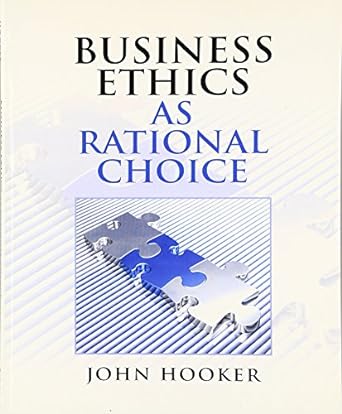A new flu medication can act as a cure or as a vaccine, but a curative dose
Question:
A new flu medication can act as a cure or as a vaccine, but a curative dose is 10 times larger than a vaccination. The cure and the vaccine always work. Half of healthy persons who don’t receive the vaccine will get the flu. The medication is in short supply. Health authorities can use all of it as a cure or all as vaccine, or some combination of the two. What allocation maximizes utility? What allocation(
s) satisfies the Difference Principle? Hint. Utility is measured by the number of persons who don’t get the flu. There are potentially four groups to consider when applying the Difference Principle: treated sick patients, untreated sick patients, vaccinated healthy patients, and unvaccinated healthy patients. The benefit to a group can be measured by the probability that a person in that group will get the flu.
Step by Step Answer:






